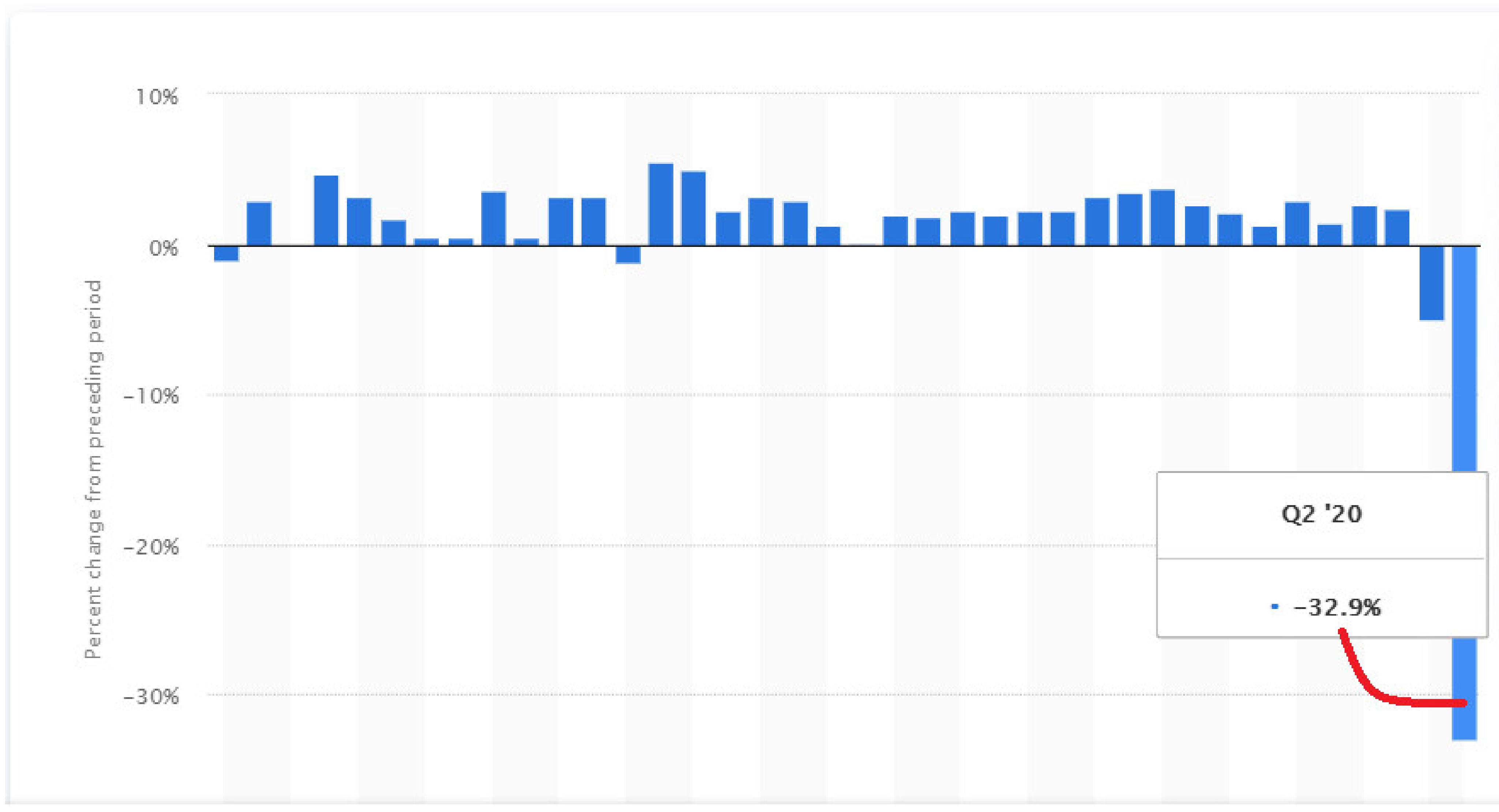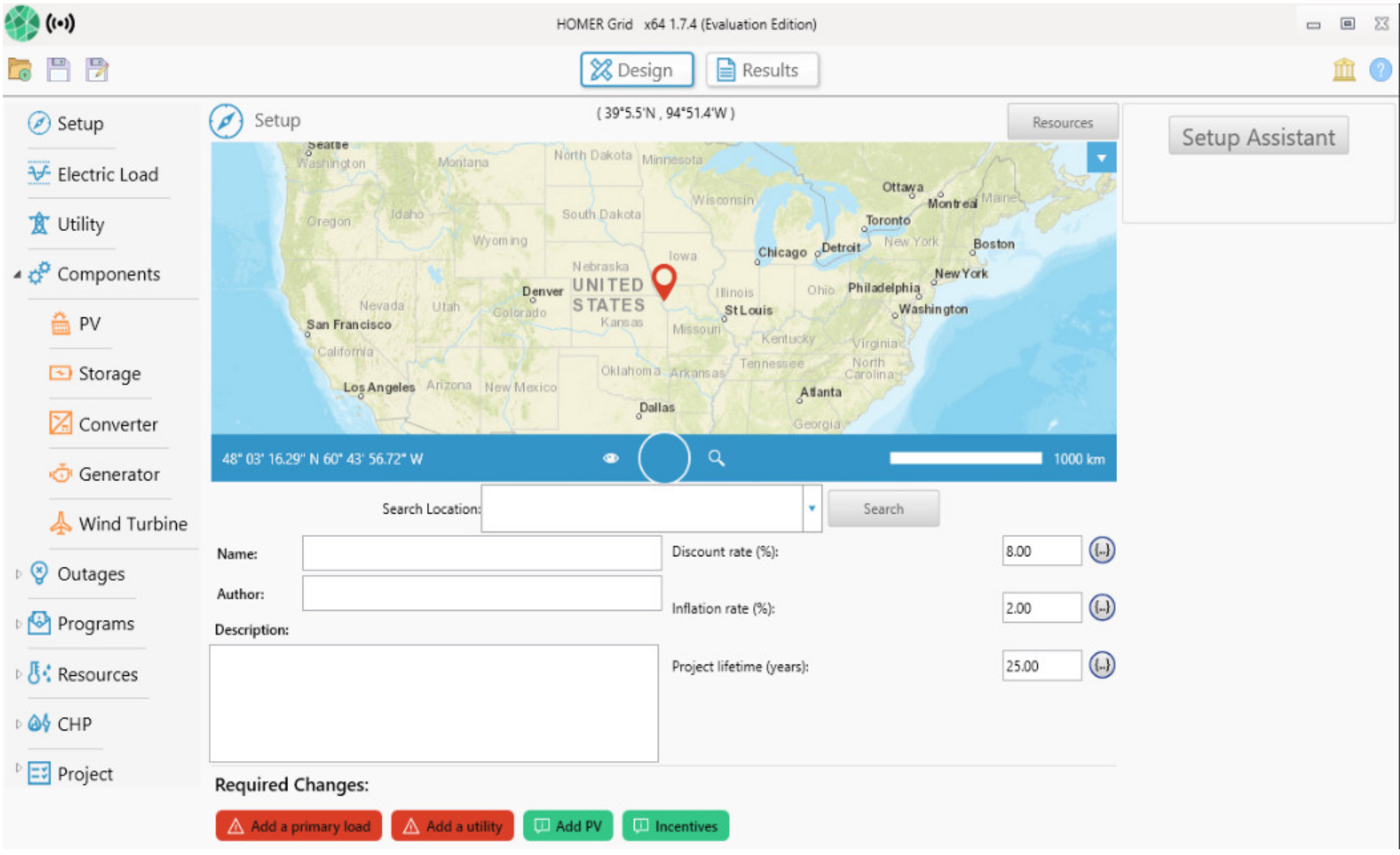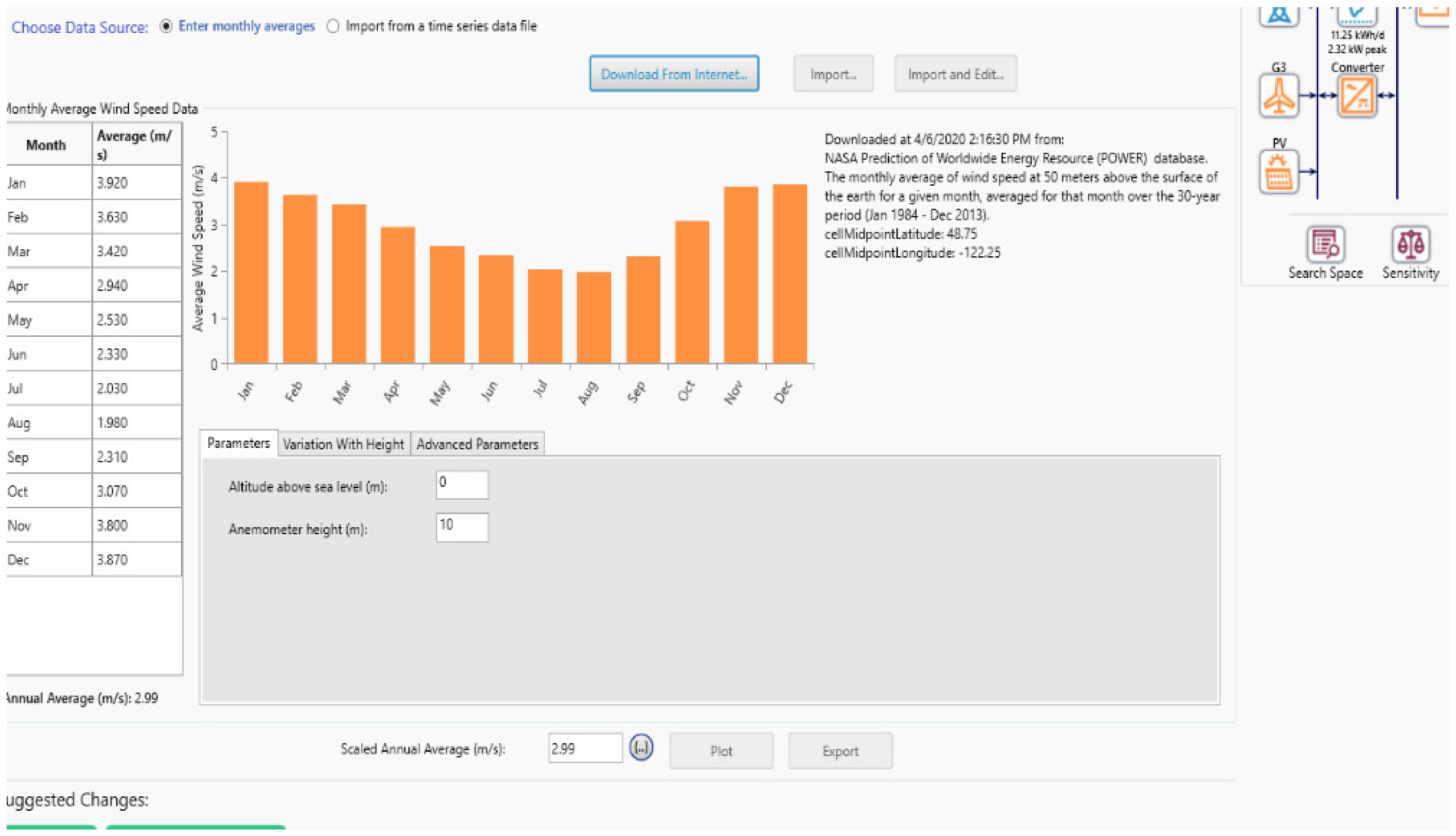Renewable Energy at Home: A Look into Purchasing a Wind Turbine for Home Use—The Cost of Blindly Relying on One Tool in Decision Making
Abstract
1. Introduction
1.1. Current Research Framework
1.2. Renewable Energy at Home
2. Materials and Methods
3. Results
4. Discussion
5. Conclusions
Author Contributions
Funding
Institutional Review Board Statement
Informed Consent Statement
Data Availability Statement
Conflicts of Interest
References
- Espinoza, A. Visitors get glimpse of Block Island Wind Farm in Test Phase. 2016. Available online: https://www.wnpr.org/post/visitors-get-glimpse-block-island-wind-farm-test-phase (accessed on 30 April 2020).
- Valentine, S. Wind Power Politics and Policy; Oxford University Press: Oxford, UK, 2015. [Google Scholar]
- Rasmussen, N.B.; Enevoldsen, P.; Xydis, G. Transformative multi-value business models: A bottom-up perspective on the hydrogen-based green transition for modern wind power cooperatives. Int. J. Energy Res. 2020, 44, 3990–4007. [Google Scholar] [CrossRef]
- Koscis, G.; Xydis, G. Repair process analysis for Wind Turbines equipped with Hydraulic Pitch mechanism on the U.S. market in focus of cost optimization. Appl. Sci. 2019, 9, 3230. [Google Scholar] [CrossRef]
- Wang, H.-M.S.; Piccard, L.; Yao, L.; Spohn, K.M. 2010, Feasibility study of wind power generation system at arctic valley. EMJ Eng. Manag. J. 2010, 22, 21–33. [Google Scholar]
- Bastian, N.; Trainor, T. Going Green at West Point: Is It Economically Beneficial? A Cost-Benefit Analysis of Installing a Wind Farm at the United States Military Academy. Eng. Manag. J. 2010, 22, 12–20. [Google Scholar] [CrossRef]
- Schoolman, E.D.; Shriberg, M.; Schwimmer, S.; Tysman, M. Green cities and ivory towers: How do higher education sustainability initiatives shape millennials’ consumption practices? J. Environ. Stud. Sci. 2016, 6, 490–502. [Google Scholar] [CrossRef]
- Nanaki, E.A.; Kiartzis, S.; Xydis, G.A. Are only demand-based policy incentives enough to deploy electromobility? Policy Stud. 2020. In Press. [Google Scholar] [CrossRef]
- Xydis, G.; Mihet-Popa, L. Wind Energy Integration via Residential Appliances. Energy Effic. 2016, 10, 319–329. [Google Scholar] [CrossRef]
- Haynes, D.; Corns, S. Improving Grid Network Operations Through an Improved Energy Market. EMJ Eng. Manag. J. 2020, 32, 208–218. [Google Scholar] [CrossRef]
- U.S. Energy Information Administration. How Much of U.S. Energy Consumption and Electricity Generation Comes from Renewable Energy Sources? 2018. Available online: https://www.eia.gov/tools/faqs/faq.php?id=92&t=4 (accessed on 19 April 2020).
- Panagiotidis, P.; Effraimis, A.; Xydis, G. An R-focused Forecasting Approach for Efficient Demand Response Strategies in Autonomous Micro Grids. Energy Environ. 2019, 30, 63–80. [Google Scholar] [CrossRef]
- Enevoldsen, P.; Xydis, G. Examining the trends of 35 years growth of key wind turbine components. Energy Sustain. Dev. 2019, 50, 18–26. [Google Scholar] [CrossRef]
- Energy.gov. Small Wind Electric Systems. 2020. Available online: https://www.energy.gov/energysaver/save-electricity-and-fuel/buying-and-making-electricity/small-wind-electric-systems (accessed on 18 September 2020).
- Hansen, J.M.; Xydis, G. Rural Electrification in Kenya. A useful case for remote areas in Sub-Saharan Africa. Energy Effic. 2020, 13, 257–272. [Google Scholar] [CrossRef]
- Olasunkanmi, O.G.; Roleola, O.A.; Alao, P.O.; Oyedeji, O.; Onaifo, F. Hybridization energy systems for a rural area in Nigeria. IOP Conf. Ser. Earth Environ. Sci. 2019, 331, 012007. [Google Scholar] [CrossRef]
- Suman, G.K.; Roy, O.P. 2019, Microgrid System for A Rural Area—An Analysis of HOMER Optimised Model Using MATLAB. In Proceedings of the 2019 3rd International Conference on Recent Developments in Control, Automation and Power Engineering, RDCAPE, Noida, India, 10–11 October 2019; pp. 534–539. [Google Scholar]
- Hadjidj, M.S.; Bibi-Triki, N.; Didi, F. Analysis of the reliability of photovoltaic-micro-wind based hybrid power system with battery storage for optimized electricity generation at Tlemcen, north west Algeria. Arch. Thermodyn. 2019, 40, 161–185. [Google Scholar]
- Oliver, D.; Groulx, D. Thermo-economic assessment of end user value in home and community scale renewable energy systems. J. Renew. Sustain. Energy 2012, 4, 023117. [Google Scholar] [CrossRef]
- Ugur, E.; Elma, O.; Selamogullari, U.S.; Tanrioven, M.; Uzunoglu, M. 2013, Financial payback analysis of small wind turbines for a smart home application in Istanbul/Turkey. In Proceedings of the 2013 International Conference on Renewable Energy Research and Applications, ICRERA, Madrid, Spain, 20–23 October 2013; pp. 686–689. [Google Scholar]
- Rodriguez-Hernandez, O.; Martinez, M.; Lopez-Villalobos, C.; Garcia, H.; Campos-Amezcua, R. Techno-economic feasibility study of small wind turbines in the Valley of Mexico metropolitan area. Energies 2019, 12, 890. [Google Scholar] [CrossRef]
- Hemmati, R. Technical and economic analysis of home energy management system incorporating small-scale wind turbine and battery energy storage system. J. Clean. Prod. 2017, 159, 106–118. [Google Scholar] [CrossRef]
- Canale, T.; Ismail, K.A.R.; Lino, F.A.M.; Arabkoohsar, A. Comparative Study of New Airfoils for Small Horizontal Axis Wind Turbines. J. Solar Energy Eng. 2020, 142. [Google Scholar] [CrossRef]
- Olaofe, Z.O.; Folly, K.A. Potentials of a 5KW wind energy system with integrated storage bank for home energy management. In Proceedings of the IASTED International Conference, Botswana, Africa, 3–5 September 2012; pp. 102–109. [Google Scholar]
- Rasouli, V.; Hemmati, R. Net zero energy home including photovoltaic solar cells, wind turbines, battery energy storage systems and hydrogen vehicles. In Proceedings of the 2017 International Conference in Energy and Sustainability in Small Developing Economies (ES2DE), Funchal, Portugal, 10–12 July 2017. [Google Scholar] [CrossRef]
- Statista. Quarterly growth of the real GDP in the United States from 2011 to 2020. 2020. Available online: https://www.statista.com/statistics/188185/percent-change-from-preceding-period-in-real-gdp-in-the-us/ (accessed on 20 April 2020).
- Keys, L.K. The late second coming of the automobile. EMJ Eng. Manag. J. 1993, 5, 11–16. [Google Scholar] [CrossRef]
- Michalitsakos, P.; Mihet-Popa, L.; Xydis, G. A Hybrid RES Distributed Generation System for Autonomous Islands: A DER-CAM and Storage-Based Economic and Optimal Dispatch Analysis. Sustainability 2017, 9, 2010. [Google Scholar] [CrossRef]
- Avgoustaki, D.; Xydis, G. Indoor Vertical Farming in the Urban Nexus Context: Business Growth and Resource Savings. Sustainability 2020, 12, 1965. [Google Scholar] [CrossRef]
- Egilmez, G.; Oztanriseven, F.; Gedik, R. The energy climate water nexus: A global sustainability impact assessment of U.S. manufacturing. Eng. Manag. J. 2020, 32, 298–315. [Google Scholar] [CrossRef]
- HOMER Grid. “1.7.7394.26541”. Available online: https://www.homerenergy.com/products/grid/index.html (accessed on 4 April 2020).
- National Renewable Energy Laboratory. What Size Wind Turbine Do I Need? OpenEI.com. 2016. Available online: https://openei.org/wiki/Small_Wind_Guidebook/What_Size_Wind_Turbine_Do_I_Need (accessed on 3 April 2020).
- International Electrotechnical Commission. “About the IEC,” iec.ch. 2020. Available online: https://www.iec.ch/about/?ref=menu (accessed on 23 April 2020).
- Personius, M. “Planning and Development Services,” Whatcomcounty.us. 2020. Available online: https://www.whatcomcounty.us/861/Permit-Center (accessed on 1 April 2020).
- Puget Sound Energy. Distributed Renewables. 2020. Available online: https://www.pse.com/green-options/Renewable-Energy-Programs/distributed-renewables (accessed on 10 April 2020).
- Nazir, M.S.; Wang, Y.; Bilal, M.; Sohail, H.M.; Kadhem, A.A.; Nazir, H.M.R.; Abdalla, A.N.; Ma, Y. Comparison of Small-Scale Wind Energy Conversion Systems: Economic Indexes. Clean Technol. 2020, 2, 144–155. [Google Scholar] [CrossRef]
- Calhoun, A.; Pian-Smith, M.; Shah, A.; Levine, A.; Gaba, D.; DeMaria, S.; Goldberg, A.; Meyer, E.C. Exploring the boundaries of deception in simulation: A mixed-methods study. Clin. Simul. Nurs. 2020, 40, 7–16. [Google Scholar] [CrossRef]
- Calhoun, A.W.; Pian-Smith, M.C.; Truog, R.D.; Gaba, D.M.; Meyer, E.C. Deception and simulation education: Issues, concepts, and commentary. Simul. Healthc. 2015, 10, 163–169. [Google Scholar] [CrossRef] [PubMed]
- Goldberg, A.T.; Katz, D.; Levine, A.I.; Demaria, S. The importance of deception in simulation: An imperative to train in realism. Simul. Healthc. 2015, 10, 386–387. [Google Scholar] [CrossRef] [PubMed]
- Xydis, G. A wind energy integration analysis using wind resource assessment as a decision tool for promoting sustainable energy utilization in agriculture. J. Clean. Prod. 2015, 96, 476–485. [Google Scholar] [CrossRef]






Publisher’s Note: MDPI stays neutral with regard to jurisdictional claims in published maps and institutional affiliations. |
© 2021 by the authors. Licensee MDPI, Basel, Switzerland. This article is an open access article distributed under the terms and conditions of the Creative Commons Attribution (CC BY) license (http://creativecommons.org/licenses/by/4.0/).
Share and Cite
Ribbing, S.; Xydis, G. Renewable Energy at Home: A Look into Purchasing a Wind Turbine for Home Use—The Cost of Blindly Relying on One Tool in Decision Making. Clean Technol. 2021, 3, 299-310. https://doi.org/10.3390/cleantechnol3020017
Ribbing S, Xydis G. Renewable Energy at Home: A Look into Purchasing a Wind Turbine for Home Use—The Cost of Blindly Relying on One Tool in Decision Making. Clean Technologies. 2021; 3(2):299-310. https://doi.org/10.3390/cleantechnol3020017
Chicago/Turabian StyleRibbing, Sheridan, and George Xydis. 2021. "Renewable Energy at Home: A Look into Purchasing a Wind Turbine for Home Use—The Cost of Blindly Relying on One Tool in Decision Making" Clean Technologies 3, no. 2: 299-310. https://doi.org/10.3390/cleantechnol3020017
APA StyleRibbing, S., & Xydis, G. (2021). Renewable Energy at Home: A Look into Purchasing a Wind Turbine for Home Use—The Cost of Blindly Relying on One Tool in Decision Making. Clean Technologies, 3(2), 299-310. https://doi.org/10.3390/cleantechnol3020017






